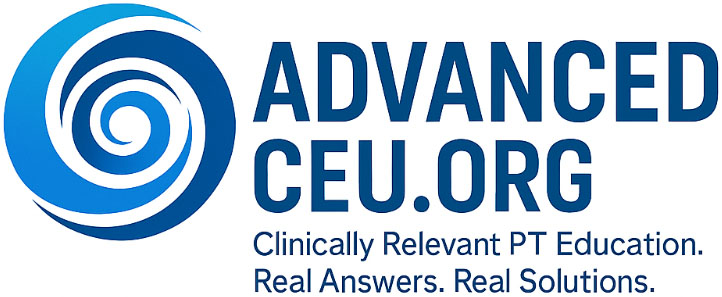Empowering You With Clinical Insight to Solve Patient Mysteries.
Courses to Understand Biomechanical Chain Connections: Posture, Gait, Functional Testing, Manual Therapy & More.
Real-World Orthopedic Tools for Better Patient Outcomes.
Featured Course:
Advanced Standing Posture & Alignment Assessment: Biomechanical Foundations for Clinical Decision-Making
6.0 Contact Hours (0.6 CEUs)
Course Description:
This advanced-level continuing education course is designed to enhance the clinician’s ability to perform comprehensive standing postural and alignment assessments. Emphasis is placed on functional biomechanics – recognizing common dysfunctions and understanding their biomechanical chain reaction implications throughout the kinetic chain. This course deepens clinical reasoning and equips therapists to identify root causes of musculoskeletal pain and dysfunction.
Through detailed examination of the lower extremity, participants will learn to identify structural deviations and their compensatory effects on proximal and distal joints (Up chain and down chain compensations). Particular attention to the foot including rearfoot valgus & varus alignment, subtalar joint pronation/supination, pronation vs pes planus and correlations with gait and the hip will be included. These findings combined with strength and mobility testing will support clinical hypothesis generation and differential diagnosis.
The course provides a systematic joint-by-joint review of postural abnormalities and explores their contribution to altered movement patterns and pain presentations. Clinicians will gain tools to better identify root causes of dysfunction and reinforce treatment planning based on restoring ideal alignment and neuromuscular balance.
From this course YOU WILL LEARN TO:
- Conduct detailed standing postural assessments using visual and palpatory tools
- Evaluate foot mechanics (rearfoot varus/valgus, arch types) and link them to knee, hip & spine dysfunction
- Correlate the subtalar joint (STJ) in the different phases of gait with hip & gluteal efficiency.
- Perform STJ Functional Movement Testing: assessing kinetic chain function from the trunk to pelvis to femur to tibia to Subtalar joint
- Recognize patterns like Lower and Upper Crossed Syndrome in real-world patients
- Interpret pelvic positioning (APT/PPT/obliquity) and hip torsion mechanics (ante/retroversion)
- Differentiate between structural vs. functional scoliosis
- Teach posture as a therapeutic exercise patients can integrate into daily life
TOPICS INCLUDE:
- Why posture matters: Understanding the kinetic chain as a whole. Alignment linked to pain, patient diagnoses and movement patterns
- Clinical application of Wolff’s Law: implications for patient retention & compliance
- A deeper look at the foot – rearfoot deformities, pes planus/cavus, subtalar joint pronation/supination: its significance in gait and biomechanical effects up the chain
- Rearfoot, Knee & Hip cues in static stance: mal-alignments and clinical consequences up and down the kinetic chain
- Functional Movement Testing of the Subtalar Joint: Top – Down Drivers
- Pelvic, spinal, and shoulder assessment and asymmetry patterns
